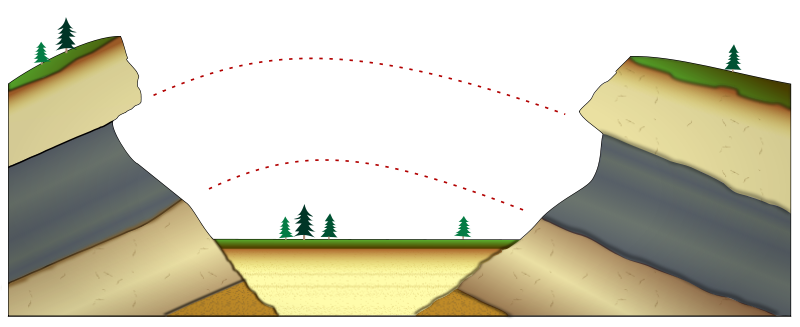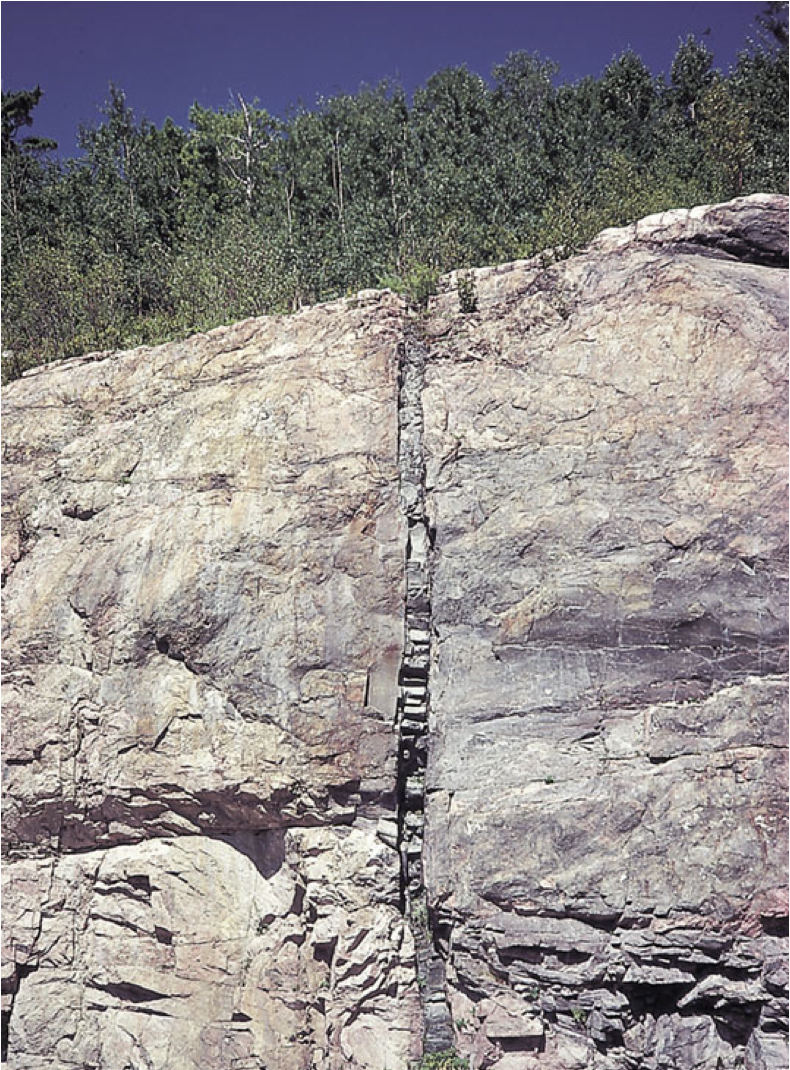Principles of Relative
 |
The Principle of Superposition tells us that deeper layers of rock are older than shallower layers |
Relative dating utilizes six fundamental principles to determine the relative age of a formation or event. The first principle is the Principle of Superposition which states that in an undisturbed succession of sedimentary rock, the oldest layers are on the bottom. This follows due to the fact that sedimentary rock is produced from the gradual accumulation of sediment on the surface. Therefore newer sediment is continually deposited on top of previously deposited or older sediment.
The Principle of Original Horizontality states that due to the influence of gravity all sediment is originally deposited horizontally. In other words, as sediment fills a depositional basins we would expect the upper most surface of the sediment to be parallel to the horizon. Subsequent layers would follow the same pattern. Using this principle we can than assume that sedimentary layers which have been deformed/folded must have been deformed after all affected layers have been deposited.
 |
Image demonstrating a common use of the principle of lateral continuity |
 |
Principle of Cross-Cutting tells us that the light colored granite must be older than the darker basalt dike intruding the granite. |
As sediment weathers and erodes from its source, and as long as it is does not encounter any physical barriers to its movement, the sediment will be deposited in all directions until it thins or fades into a different sediment type. This concept known as the Principle of Lateral Continuity allows us to assume that similar layers of rock or sediment that are separated by a valley or other erosional feature were once continuos. For purposes of relative dating this principle is used to identify faults and erosional features within the rock record. Then, by applying the Principle of Cross-Cutting we are able to relatively date those processes. The principle of cross-cutting states that any geologic feature that crosses other layers or rock must be younger then the material it cuts across. Using this principle any fault or igneous intrusion must be younger than all material it or layers it crosses.
Much like the principle of cross-cutting, the Principle of Inclusions relatively dates objects based on their placement within other earth materials. Once a rock is lithified no other material can be incorporated within its internal structure. In order for any material to be included within in the rock it must have been present at the time the rock was lithified. For example, in order to get a pebble inside an igneous rock it must be incorporated when the igneous rock is still molten-- such as when lava flows over the surface. Therefore, the piece, or inclusion, must be older than the material it is included in.
Lastly the Principle of Fossil Succession. Aside from single-celled bacteria, most living organism reside at or very near the Earth's surface either in continental or oceanic environments. As these organisms die they are deposited on the surface along with all other sediments. If conditions are right the remains of the dying organisms can then be preserved as fossils within the rock that formed from sediments that covered the remains. Since, all sedimentary rock is formed through the gradual accumulation of sediment at the surface over time, and since the principle of superposition tells us that newer sediment is deposited on top of older sediment, the same must also be true for fossils contained within the sediment. The Principle of Fossil Succession states that groups of fossils (called fossil assemblages) proceed one another in a regular and determinable manner. Although this principle is generally applied to relative dating it is also the basis for evolution
